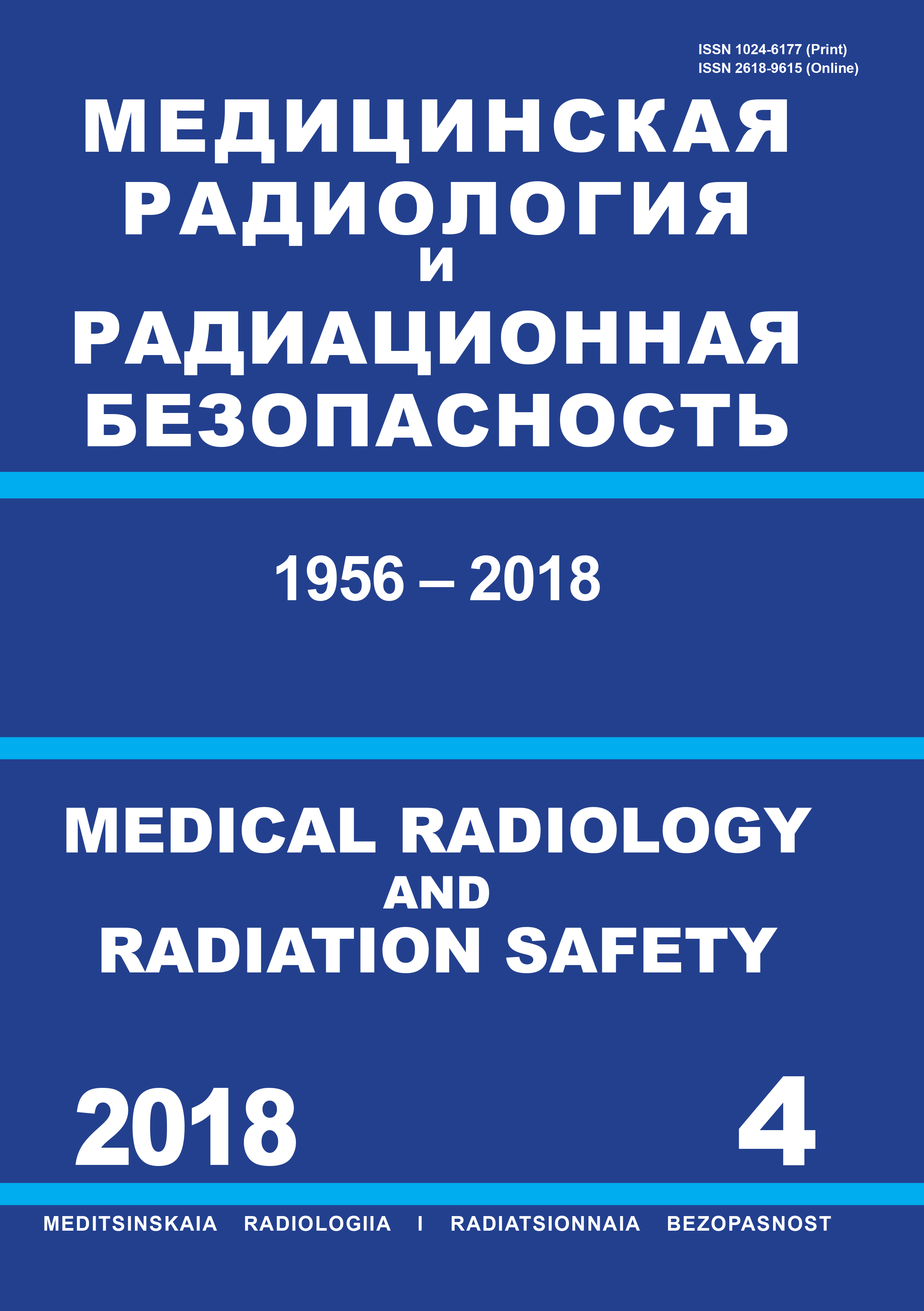Chelyabinsk, Russian Federation
Russian Federation
Russian Federation
CSCSTI 58.31
CSCSTI 76.01
Purpose: To estimate incidence risk for senile cataracts in a cohort of workers employed at nuclear production facility, that were occupationally exposed to radiation taking into account non-radiation risk factors. Material and methods: Senile cataract incidence (cataracts) is studied in the cohort of Mayak PA workers first employed at one of the main facilities (reactors, radiochemical or plutonium production plants) during 1948–1982 (22,377 individuals). All members of the study cohort were occupationally exposed to gamma-rays or neutrons over a prolonged period. Absorbed doses from external and/or neutron exposure used in the study were provided by MWDS-2008. Relative risk (RR) and excess relative risk per unit dose (ERR/Gy) were estimated based on maximum likelihood using AMFIT module of EPICURE software. Results: 4159 cataract diagnoses were verified in the study cohort of workers during 482217 person-years of follow-up. The majority of cataracts were diagnosed in cohort members included in the age group 61–70 years old in both males and females. The mean age at cataract diagnosis was 63.1 ± 0.2 years in males and 64.8 ± 0.2 years in females, respectively. RR of cataract incidence was statistically significant in all dose categories when compared to a reference category (0–0.25 Gy) and increased with increasing dose from external gamma-rays and was the highest in workers exposed to external gamma-rays at doses exceeding 2.0 Gy (1.61 95 % CI: 1,41–1,83). Significant linear association of cataracts with dose from external gamma-rays was observed with ERR/Gy = 0.28 (95 % CI: 0.20, 0.37). The risk estimate varied slightly with inclusion of additional adjustments for different non-radiation factors (smoking status and alcohol consumption, smoking index, hypertension, body mass index, severe myopia diagnosed). After adjusting for dose from neutrons ERR/Gy of external gamma-rays for cataracts increased considerably (0.31; 95 % CI: 0.22, 0.40). Significant ERR/Gy of external gamma-rays for senile cataract was revealed in both male and female workers of the study cohort, however the variations between the sexes were insignificant (p = 0.09). ERR/Gy of external gamma-rays for senile cataract was significant in all age groups except for workers under 40 years, but the differences among the age groups were insignificant (p > 0.5). Conclusion: Risk of senile cataract incidence in the cohort of Mayak PA workers, occupationally exposed to radiation over prolonged periods, was significantly associated with dose from external gamma-rays.
risk, incidence, senile cataracts, external radiation, staff of Mayak PA, prolonged exposure
Известно, что ионизирующее излучение оказывает влияние на развитие помутнения в хрусталике глаза, постепенно приводя к развитию катаракты [1–5]. До недавнего времени катаракта рассматривалась как тканевой радиационно-индуцированный эффект, для которого существует дозовый порог, зависящий от мощности облучения (острое, фракционированное, хроническое) [3]. Дозовые пороги развития катаракты периодически пересматривали на основании доступных научных знаний [4]. Последний пересмотр был в 2011 г., когда МКРЗ в Публикации 118 по тканевым реакциям снизила дозовый порог для развития катаракты с 5,0 Гр для острого облучения и > 8,0 Гр для фрационированного и пролонгированного облучения до 0,5 Гр независимо от мощности дозы облучения [5].
1. Otake M, Schull WJ. A review of forty-five years study of Hiroshima and Nagasaki atomic bomb survivors Radiation cataract. J Radiat Res. 1991;32 Suppl:283-93.
2. Gus’kova AK, Baisogolov GD. Radiation disease of human. Moscow: Medicina; 1971. 384 p. Russian.
3. Recommendations of the International Commission on Radiological Protection. ICRP Publication 26. Ann ICRP. 1977;1(3).
4. Hamada N, Fujimichi Y. Classification of radiation effects for dose limitation purposes: history, current situation and future prospects. J Radiat Res; 2014;55(4):629-40.
5. Statement on tissue reactions/Early and late effects of radiation in normal tissues and organs - threshold doses for tissue reactions in a radiation protection context. ICRP Publication 118. Ann ICRP. 2012;(41):1-2.
6. Hamada N, Fujimichi Y, Iwasaki T, et al. Emerging issues in radiogenic cataracts and cardiovascular disease. J Radiat Res. 2014;55(5):831-46.
7. ICD-9 guidelines for coding diseases, injuries and causes of death/revision 1975. Geneva, Switzerland: WHO; 1980.
8. Azizova TV, Tepljakov II, Grigor’eva ES, et al. “Clinic” Medical Dosimetric Database for Mayak PA Personnel and Its Families. Med. Radiology and Radiation Safety. 2009;54(5):26-35. Russian.
9. Khokhryakov VV, Khokhryakov VF, Suslova KG, et al. Mayak Worker Dosimetry System 2008 (MWDS-2008): Assessment of internal alpha-dose from measurement results of plutonium activity in urine. Health Phys. 2013;104(4):366-78.
10. Preston D, Lubin J, Pierce D, et al. EPICURE Users Guide. Seattle, WA: Hirosoft; 1993.
11. Bragin EV, Azizova TV, Bannikova MV. Cataract incidence in the cohort of occupationally exposed workers. Oftal’mologia. 2016;13(2):115-21. Russian.
12. Bragin EV, Azizova TV, Bannikova MV. Risk of senile cataract among nuclear industry workers. Ophthalmology. 2017;33(2):57-63. Russian.
13. Neriishi K, Nakashima E, Akahoshi M, et al. Radiation dose and cataract surgery incidence in atomic bomb survivors, 1986-2005. Radiology. 2012;265(1):167-74.
14. Neriishi K, Nakashima E, Minamoto A, et al. Postoperative cataract cases among atomic bomb survivors, radiation dose response and threshold. Radiat Res. 2007;168(4):404-8.
15. Nakashima E, Neriishi K, Minamoto A. A reanalysis of atomic-bomb cataract data, 2000-2002, a threshold analysis. Health Phys. 2006;90(2):154-60.
16. Worgul BV, Kundiyev YI, Sergiyenko NM, et al. Cataracts among Chernobyl clean-up workers, implications regarding permissible eye exposures. Radiat Res. 2007;167(2):233-43.
17. Chodick G, Bekiroglu N, Hauptmann M, et al. Risk of cataract after exposure to low doses of ionizing radiation: a 20-year prospective cohort study among US radiologic technologists. Amer J Epidemiol. 2008;168(6):620-31.
18. Guidance on Radiation Dose Limits for the Lens of the Eye. NCRP Commentary No. 26. National Council on Radiation Protection and Measurements. Bethesda, MD: NCRP; 2016.





